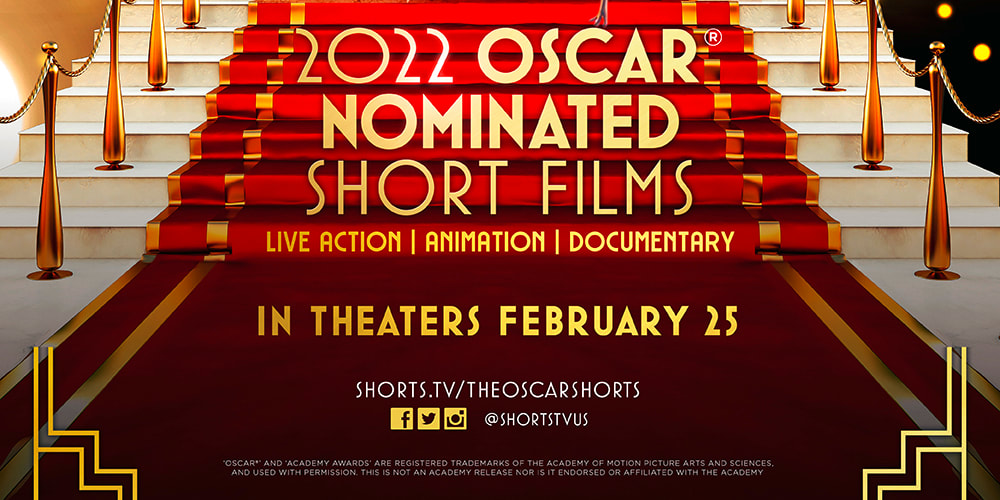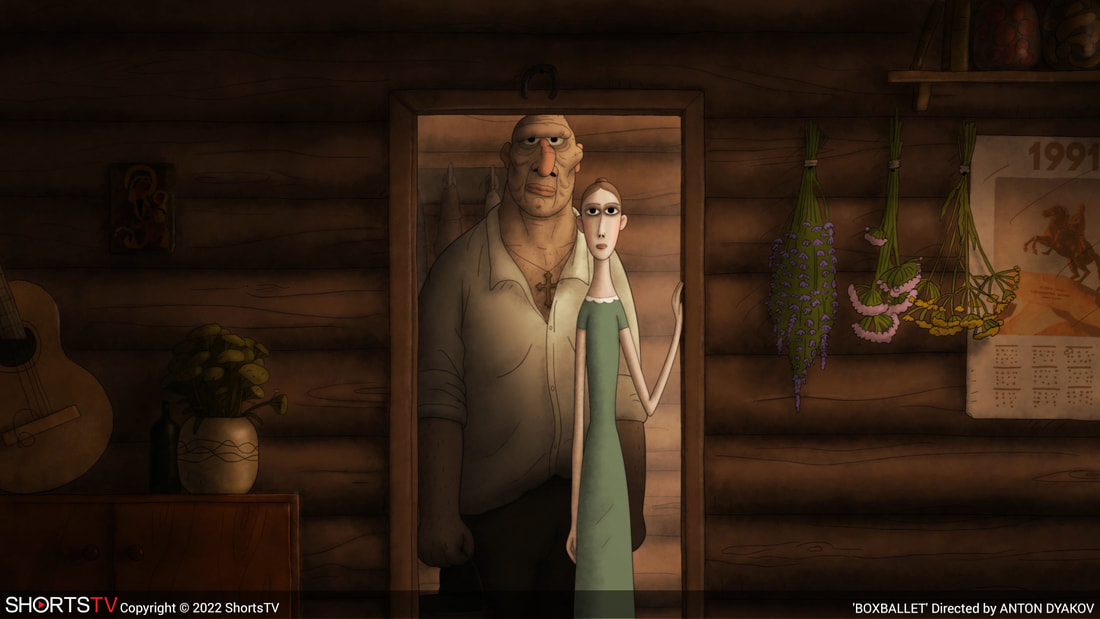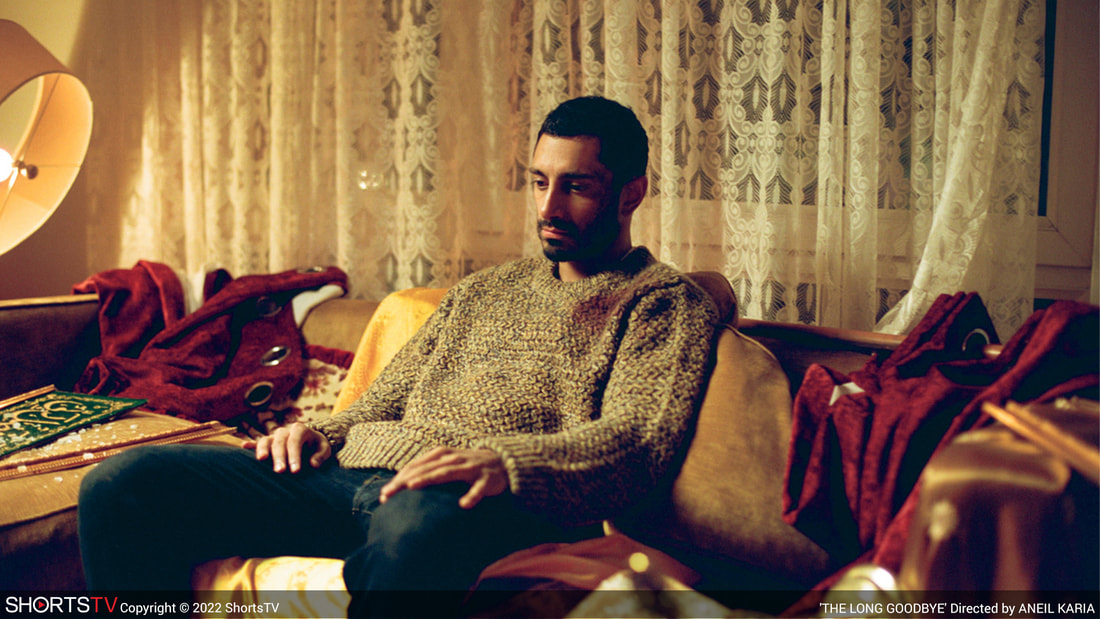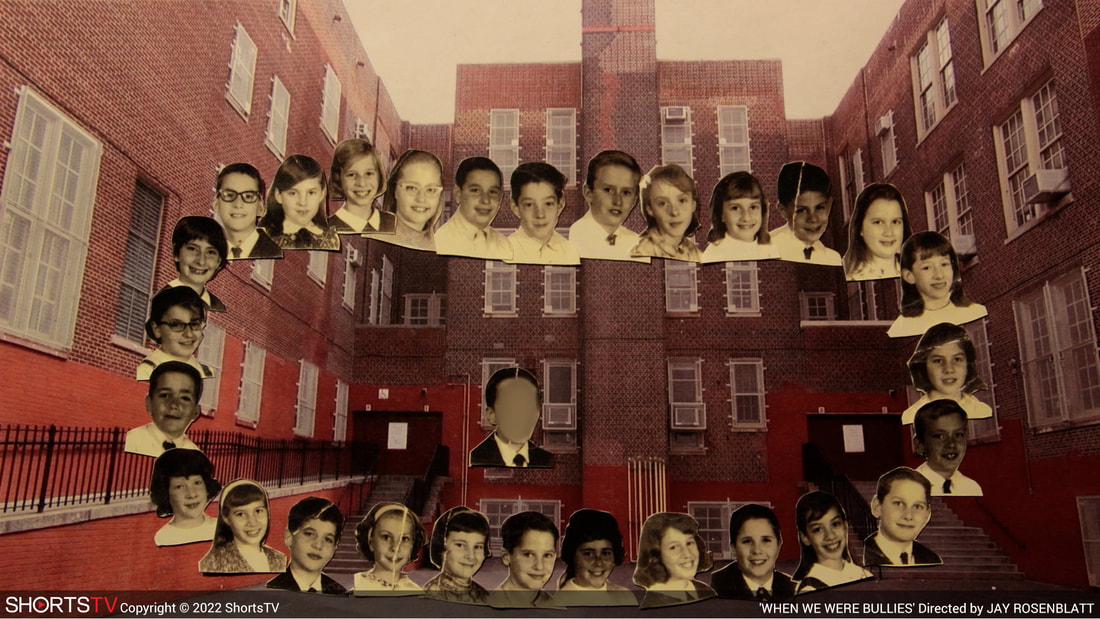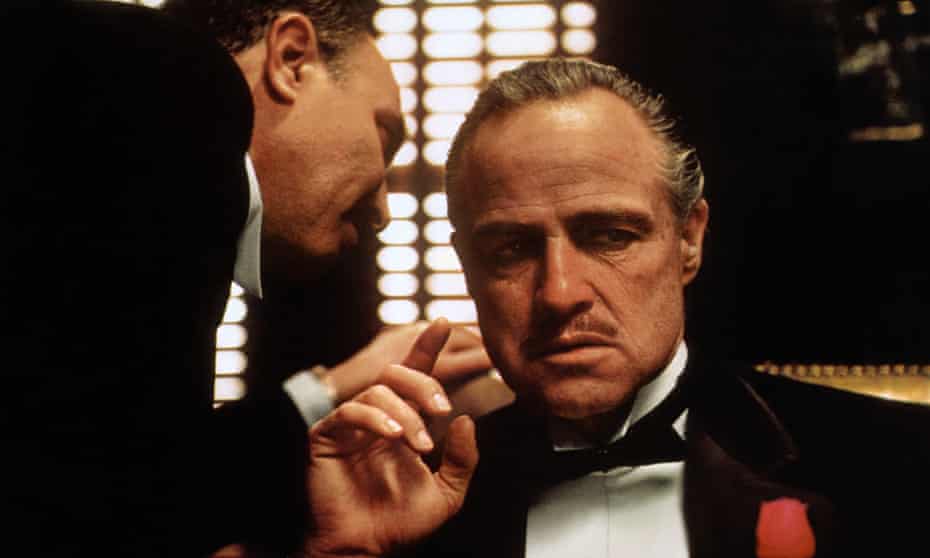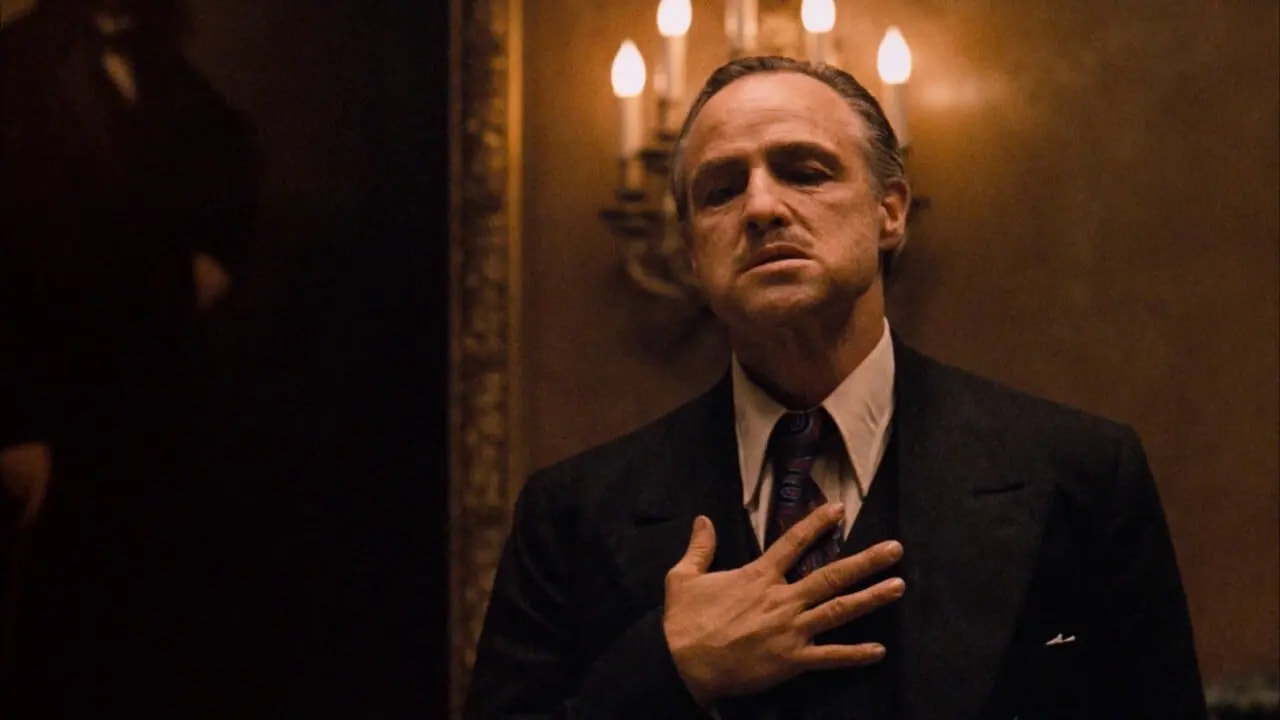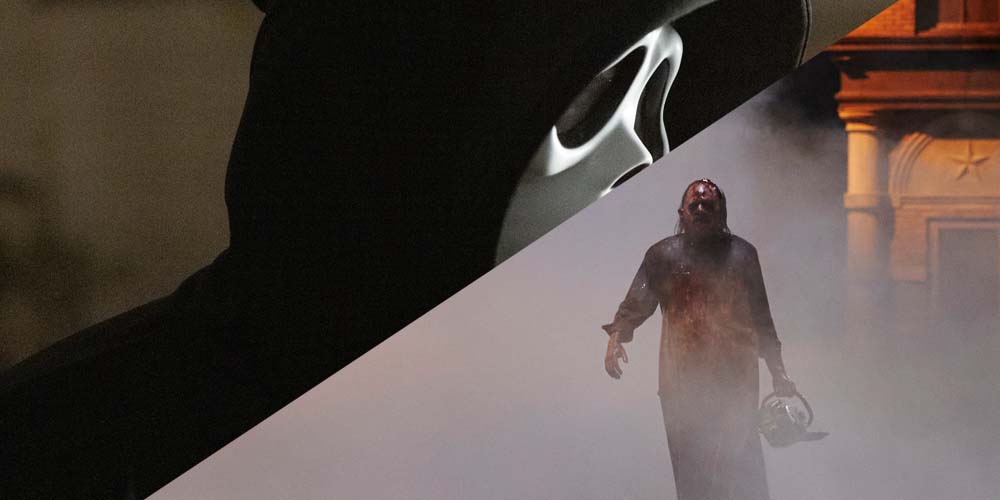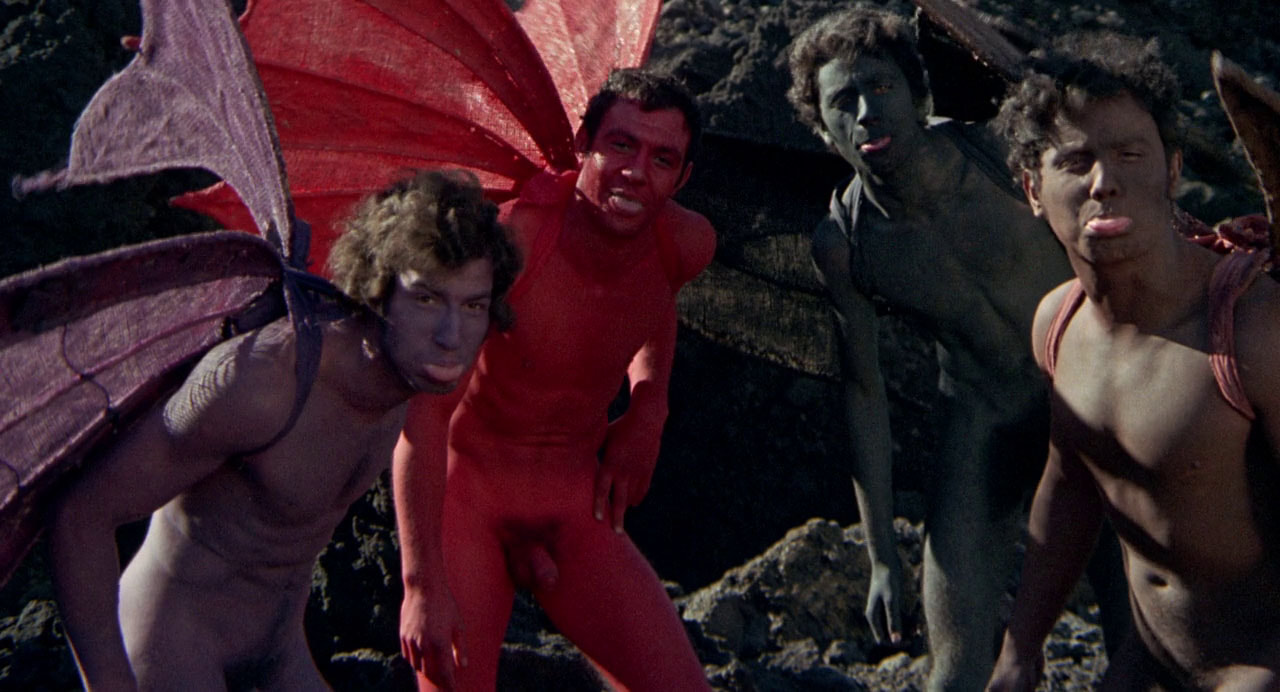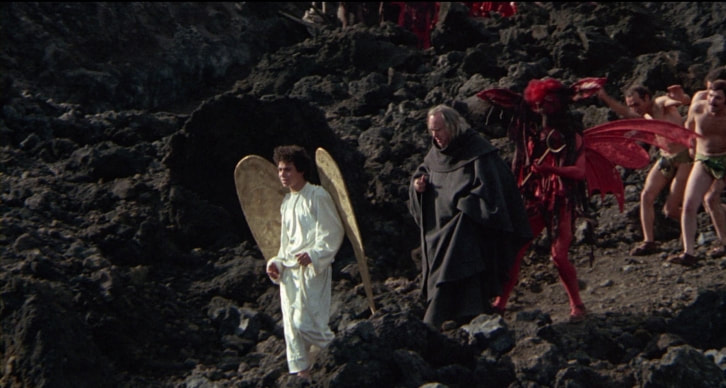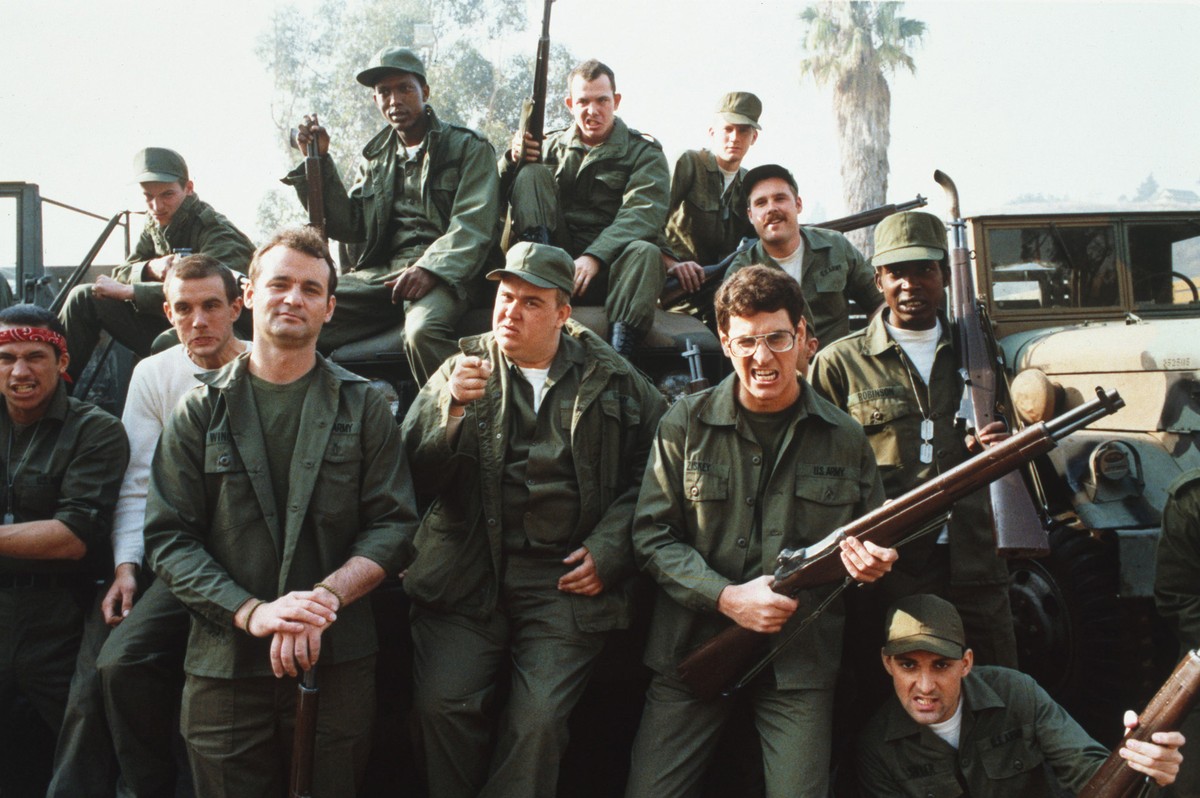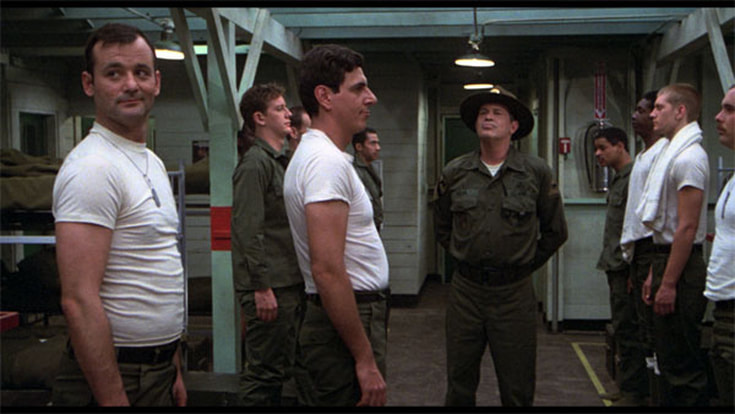|
By Sean Boelman
Every year, ShortsTV releases the short films nominated in all three categories — Animation, Live Action, and Documentary — in theaters. Not only is this an opportunity for audiences across the country to see the nominees, it is also the chance for these filmmakers to see their work projected on the big screen, an opportunity which is not often afforded to shorts. Especially with recent news that the three categories won’t be broadcast live at the ceremony, it is important to recognize the extraordinary work of these filmmakers from around the world.
Animated
5. Bestia
The Chilean short film Bestia is definitely one of the most unique of the five animated shorts, but it’s not very good. It’s a pretty detestable film, in fact, exploring potentially interesting subject matter in a way that is disturbing in all the wrong ways. The ceramic stop-motion style is intriguing at first, but the film leans way too heavily into the bizarre with some content that is outright disgusting. It’s a shame, because the film shows the promise to be an interesting commentary on the political turmoil in the country in which it is set, but it ends up being a waste of potential. 4. Affairs of the Art Joanna Quinn’s Affairs of the Art has the benefit of being extremely personal, even if it doesn’t work in pretty much any other way. Telling the story of a family’s unusual hobbies, the animation is messy and the film makes some attempts at humor that completely fall flat. It deals with some weird ideas (albeit not as weird as Bestia’s) that are just rather off-putting in nature. It’s the type of film that has a particular niche that will appreciate it, which makes it all the more surprising that it ended up in this category. 3. The Windshield Wiper It wouldn’t be an Oscar Animated Shorts category without a film that is more style than substance, and Alberto Mielgo’s The Windshield Wiper fits that bill. The thing that this short should be praised for is the ambition in its animation, as there are a few different approaches all combined into the fifteen minute runtime, but it doesn’t all add up into something interesting. The message about love is pretty insubstantial, and the narrative is quite lacking. There are a lot of really good beats in this short, but it’s missing something to be excellent. 2. Robin Robin Often, the Animated Short category is dominated by one or two entries from the major studios, but this year, the only big player in the competition is Aardman with Robin Robin. This mainstream stop-motion animated short is absolutely adorable, but also very conventional. That said, audiences (and voters) are surely going to resonate with the very heartfelt tale of the protagonist feeling out-of-place and then finding themself. And it will definitely help that the film has big names attached to it, both in regards to its studio and the cast, which features Richard E. Grant among others. 1. Boxballet Anton Dyakov’s Boxballet is not only the best of the animated shorts, but also the best of the shorts in any category. It’s a very basic story, about a boxer and a ballerina who form an unexpected relationship, but there’s something powerful in its simplicity. The animation style is rough but charming, but the thing about the film that is most impressive is that it does so much with so little. There’s no dialogue in the film, and yet the emotion that it is able to convey is absolutely extraordinary. Live Action
5. Ala Kachuu - Take and Run
The Academy is notorious for recognizing trauma porn, films which explore an important and timely issue, but in a way that feels enormously manipulative (almost to the point of being insensitive). And while we were spared of this in the feature categories, Ala Kachuu - Take and Run shows that the Oscars can’t escape this trend. About a young woman in Kyrgyzstan who is forced into an arranged marriage when she expresses the desire to receive an education, the film is a snapshot of an issue that is shockingly still present in today’s society, but feels like little more than a justification to include an angering statistic before the end credits. 4. The Dress Tadeusz Lysiak’s The Dress is one of the more well-shot short films in this year’s batch, but the issue with it is that it isn’t all that interesting. Following a woman who has struggled romantically due to her dwarfism as she meets and bonds with a handsome truck driver, it’s a very slow and somber film, and there isn’t enough here to sustain the viewer’s interest for a full thirty minutes. Anna Dzieduszycka does a very solid job in her leading role, but there isn’t enough substance to the character for her to have much of an impact. 3. Please Hold Last year’s winner in the Live Action Short Film category, Two Distant Strangers, handled an incredibly relevant political topic with a sci-fi lens, and it was incredibly divisive. This year’s Please Hold isn’t quite as embarrassing as that film, but it’s also overambitious while still managing to only scratch the surface on its themes. There are definitely some things to like about this, but the execution is cheap-looking and KD Davila’s script is incredibly uneven. This is the type of film that was clearly recognized more for what it stands for than what it actually accomplished. 2. On My Mind On My Mind is an entirely inoffensive film, but it also isn’t particularly good. Following a man who desperately wants to sing “Always On My Mind” by Elvis at a karaoke bar on a weekday afternoon, the film spends almost two-thirds of its brief runtime building up to a final scene that is either going to leave the viewer in tears or absolutely frustrated. It seems likely that more will be the latter, as this tear-jerker resorts to some of the most basic tricks in the book to get a reaction out of the audience. 1. The Long Goodbye Every year, there seems to be a star-driven short in the Live Action category, and this year, it is The Long Goodbye, starring last year’s Academy Award nominee Riz Ahmed. Following a Muslim family living in Britain as a group of white supremacists threaten them, it’s a very shocking and unsettling watch in all the best ways. Ahmed gives yet another extraordinary performance, proving again that he is one of the most talented actors working today, especially in the rap-based finale. It’s the only one of the five that is particularly impactful, and should be the clear frontrunner. Documentary
5. Lead Me Home
The Documentary Short category is typically the most consistent of the three, and this year is no exception. Even the weakest of the bunch, Pedro Kos and Jon Shenk’s Lead Me Home, isn’t bad. Exploring the homelessness crisis on the US West Coast, there’s no denying that the film explores a topic which is very important, but in a way that isn’t as affecting as it likely should have been. It’s an all-around well-made documentary, but the approach doesn’t feel quite as urgent as this topic demands. 4. Three Songs for Benazir Three Songs for Benazir is the type of short film that uses an intimate story to illustrate a greater issue in society. Following a young refugee who wants to join the army but also faces the challenge of starting a family with his new bride, it’s a very human story and a fascinating tale of perseverance and dedication. However, the thing that makes Gulistan and Elizabeth Mirzaei’s film so special is that it’s surprisingly optimistic. Audiences are used to seeing dark and depressing doc shorts about this type of topic, and it’s refreshing to see something with a better outlook. 3. The Queen of Basketball There’s usually one odd archival-based doc short in the mix, and The Queen of Basketball is a good one. Directed by Ben Proudfoot (who was also nominated last year for A Concerto is a Conversation), the film tells the story of one of the greatest women’s basketball players in the history of the sport. And while the presentation is quite straightforward, and the short runtime prevents the film from interacting much with the deeper implications of Lusia Harris’s contributions, the story is so uplifting and inspiring that it speaks for itself. 2. Audible Another crowd-pleasing short documentary, Audible tells the story of a Deaf football team that has exceeded expectations at every chance they have gotten. It’s a crowd-pleasing underdog story, a type of film that has been known to resonate with Academy voters, and on top of that, it has the inclusivity angle, discussing disabled representation in a thoughtful way. On top of that, it is probably the most well-made of the batch all-around, and the most likely to resonate with general audiences. 1. When We Were Bullies Jay Rosenblatt’s When We Were Bullies has caused a lot of controversy, and it’s understandable why. Many argue that the film was not made in the best taste, and while the complaints are valid, that is also quite reductive to what is a complex, personal work of nonfiction filmmaking. Following the filmmaker as he explores an event from his childhood, the film poses some interesting questions about complicity, and while it does seem to try to make excuses at more than one point, the ultimate conclusion of the film is that there are no easy answers, making it hard to write this one off.
The 2022 Oscar-Nominated Short Films hit theaters on February 25.
0 Comments
By Dan Skip Allen
When I was a kid back about forty-two years ago, I saw The Godfather for the first time. Of course, on television, it was edited down not to show so much blood, and the cursing was cut out. It wasn't till years later that I saw the unedited version in all its glory. That's when I had a full appreciation of the greatness of The Godfather, as well as its sequel. Now it has turned fifty years old, and it still hasn't lost any of the nostalgia it had for me as a kid. As an adult with many years under my belt, I have a new respect for this Francis Ford Coppola classic.
The Godfather is based on the book by Mario Puzo. It chronicles the lives of the Corleone family, of which Don Vito Corleone (Marlon Brando) is the patriarch. He has garnered a lot of respect from his constituents and business associates. Even so, when they need something, they'll come to him at his daughter's (Talia Shire) wedding. He has three sons. One is part of the family business Sonny (James Caan), another Michael (Al Pacino) is just home from the Army, and his third son Fredo (John Cazale) is a little slow, but he's also a part of Genco Olive Oil which is the front for the business. Coppola created a look and feel of the iconic film. Set in the 1940s, the film has a style that sets it apart from any other movie in this genre. It has a grain that makes it have a lived-in feel and a worn-out look. Gordon Willis is the cinematographer, and he leans on a darker paper of colors such as blacks and browns. The inside scenes are perfectly set in these colors. The outdoor scenes show a little more range of tans and peaches that contrast to the indoor scenes. This film looks gorgeous no matter how you look at it. All great films have memorable lines of dialogue that will live in the annals of time. The Godfather is no different. As mentioned before, Don Vito is visited at his daughter's wedding by many to pay tribute, and one of those people is an actor/singer named Johnny Fontane (Al Martino). He comes asking the Don if he can help him land a role in a movie he wants to star in, and Don Vito tells him he'll help him. He asks how and Don Vito says, "I'll make him an offer he can't refuse." Another great quote from the film is when they send their best hitman, Luca Basi (Lenny Montana), to take care of some family business. He doesn't come back. Instead, they get a package delivered, and in it is a fish. They say, "Luca Brasi swims with the fishes." My favorite line in the film is when a hit is made out in the sticks of New Jersey by Clemenza (Richard A Castello) tells his partner, "Leave the gun, take the cannoli." This film is littered with great lines.
This film has a great cast in it. Besides the actors I've mentioned already, there are a lot of teller performances from the supporting cast, such as Robert Duval as Tom Hagan, the consigliere, and Diane Keaton as Kay Adams, Michael's girlfriend and eventual wife. And with all gangster films comes the other family heads and various members of the organization. Abe Vigoda (Tessio), Al Lettieri (Solozzo), and Sterling Hayden (Capt. McCluskey) are all great as the antagonists of the film. This film is filled with Oscar winners and all-time greats. It's one of the best casts ever in any movie.
Besides the cinematography, the film also has some fantastic production design by Dean Tavoularis, makeup and hair design, costumes, and editing by too many to list. The score was by Nino Rota, and it was incredible. It brought you into this world perfectly. This score is iconic for its melancholy, but also its legendary tones. The first few notes are mesmerizing and so memorable to me all these years later. Coppola helped adapt Puzo's book, making this book come to life. The character arks for many of the characters are very satisfying. All the sons of Don Vito have their various plot points, but Michael's arc is one of the greatest in film history. He goes from a mild-mannered son who wants nothing to do with the family business to becoming a cold-blooded killer and the leader of a crime syndicate in the guise of a businessman. In later films, this would become more prominent. The script is a masterpiece by anybody's standards. As years have gone by, I've watched The Godfather probably thirty or forty times. I see something new in it each time I watch it. It has layers that not a lot of films have. It has a rewatchability factor like no other film ever. The family drama, the crime drama, and the character beats are some of the best in any movie. Coppola captured a subsection of society that wasn't that prominent at the time but became an entire genre in later years. Filmmakers like Martin Scorsese made it their own. And various true stories about real-life gangsters were made into films like Goodfellas, directed by Martin Scorsese, Donnie Brasco (which also starred Al Pacino), and American Gangster from Ridley Scott. The Godfather and its sequel have become part of the lexicon of society, not just criminal society like Scarface. Not that awards are important, but they signify greatness, so they must be discussed. The Godfather sits at number 5 on AFI's Top 100 Movies of All Time list currently, and it won three Academy Awards back in 1973 for the '72 calendar year: Best Picture, Best Actor for Marlon Brando (for which he sent Sachin Littlefoot to accept the award on his behalf due to his protest against the treatment of Native Americans in movies and the country), and Best Adapted Screenplay by Coppola and Puzo based on his book. It also stands at number two on IMDb's list of the 250 best movies list. And it won many other awards as well. The fact remains that it's one of the greatest films of all time. It has stood the test of time because of the timeless nature of the story, the incredible characters, and the incredible skill that went into every aspect of the production.
Review by Sean Boelman
It's been nice to see horror films become a major moviegoing event again, but at what cost does that come? There is no better feeling than sitting in a packed house with a crowd of (respectful) fans waiting to be scared. But these days, horror is the only genre of film that relies more on franchise goodwill than superhero flicks. Why does it work in this genre and not others?
The first attempt to kickstart some sort of legacy horror was in the 1990s. Wes Craven's 1994 film New Nightmare was exceptionally ahead of the curve for meta-commentary and following up a widely-beloved original. Featuring the actors from the original A Nightmare On Elm Street playing both fictionalized versions of themselves and their characters, the film was well-received by critics. Still, being the lowest-grossing film in the franchise implies audiences weren't quite ready for its unique brand of weirdness. Just four years later, the Halloween franchise would have Halloween H20, which would be much more of a financial success. After a string of sequels that took the canon in unusual (and generally maligned) directions, it was nice to see a film that brought back the original film's main star, Jamie Lee Curtis. But then its sequel, Halloween: Resurrection, didn't do as well, seemingly killing nostalgia-driven horror sequels. But how did we get to a point where every franchise now seems to be doing a nostalgia sequel? Blumhouse managed to pull off a massive hit with David Gordon Green's 2018 Halloween — fitting given that the same franchise was one of the initial ones to try to cash in on series nostalgia. And now audiences are stuck in a perpetual cycle of horror films trying to one-up their predecessors while still paying homage. The first two months of 2022 alone have seen two legacy horror films. First was Scream, a new entry in an already self-aware series that attempts to be even more self-aware. But it doesn't seem to be aware that the franchise's late creator Wes Craven had already done the same gimmick twice before (the aforementioned New Nightmare and 2011's Scream 4). Netflix's legacy sequel Texas Chainsaw Massacre is one of the few that has genuinely one-upped its predecessor. Considered by many to be a pinnacle of low-budget filmmaking, Tobe Hooper's original slasher film is relatively tame in retrospect. The new movie doubles down on the gore with an insane body count, and while it isn't without its fair share of flaws, it actually feels like it has a reason to exist beyond the nostalgia. So is this trend one that is worth continuing? Few, if any, of the legacy horror movies that have come out are unwatchable, but one must wonder why Hollywood won't take any chances on big-budget original horror. A Quiet Place was a huge hit, spawning a franchise of its own. Was that just lightning in a bottle? There aren't many horror franchises left to be revived.
By Sean Boelman
Today at the Berlin Film Festival, the Golden Bear was given to Carla Simón for her film Alcarràs, but at Berlinale in 1972, Pier Paolo Pasolini collected the award for his film The Canterbury Tales. A characteristically idiosyncratic and angry adaptation of Chaucer’s iconic work, it’s still very relevant fifty years later.
In the film, Pasolini liberally adapts eight of the twenty-four stories in Chaucer’s collection that take the form of stories being told by a group of pilgrims on a long journey. As always with Pasolini’s films, there is an abundance of sexuality and nudity, but it’s used in a way that is more than just titillation or shock. Many of Pasolini’s films explore the idea of morality and that is certainly the case with this. Pasolini and Chaucer make an exceptional match because both of them critique society very aggressively in their work. The tongue-in-cheek excess with which Pasolini approaches this story works quite well. Another interesting thing about Pasolini’s style is how he blends the elegant with the carnal, much like how Chaucer mixed the high and the low. It’s a very upscale, well-shot film, but some of the content that is being depicted is absolutely absurd and even sometimes blasphemous. It’s sure to upset some, but will earn a good deal of fans.
The second segment, based on The Friar’s Tale, is one of the more memorable in the film because it has the most direct approach. This tale of a tax collector and the devil has stood the test of time since when it was first written in the 1300s. And the way the dialogue is written in the film is just brilliant.
But unlike most anthologies, there isn’t a weak link to be found in Pasolini’s film. There are some segments that are on the short side, but even those have a very good reason for existing. Every section will leave the viewer either laughing or upset, allowing it to get its point across consistently and effectively. The Canterbury Tales is in the Criterion Collection as part of a box set containing Pasolini’s Trilogy of Life. And the Blu-Ray restoration is absolutely gorgeous. It’s rare that you see a film from the 1970s preserved and restored this well, but the folks at Criterion have set an exceptional standard and always live up to it. Pasolini’s The Canterbury Tales isn’t going to be everyone’s cup of tea, but it’s a truly unique film that deserves to be seen. Although the director’s more shocking work may get more of the attention, one shouldn’t ignore his other films.
By Dan Skip Allen
Ivan Reitman has had a forty-year career as a director and producer making such movies as Ghostbusters and its sequel, Animal House, Meatballs, Dave, and a few Arnold Schwarzenegger comedies. He has made some iconic films in his career. He has even helped his son become a great director as well. One of his most iconic movies is Stripes, a comedy about two men who join the Army and get more than they bargained for.
John Winger (Bill Murray) is a down-on-his-luck man who lost his job, girlfriend, car, and apartment. He's looking for something to motivate him and get his mind and body right. Russell Disney (Harold Ramis) is his best friend. He teaches migrants how to read and speak the English language. They both need a change in life and a change in mindset. The Army is the right place for them. Along the way, they meet some colorful characters and a couple of enlisted ladies and become friends with them. Along with Murray and Ramos are John Candy as Ox, Judge Reinhold as Elmo, Warren Kate's as Sgt. Hulka, John Larroquette as Capt. Stillman, PJ Soles as Stella, and Sean Young as Louise. This cast is fantastic. It has a lot of standup comedians who improvise quite a bit of the dialogue. The legendary comedians in this film make for many laughs and make for a hilarious ensemble. The military has never been this fun before or ever since. Stripes is full of this ragtag group of individuals who need to come together to help the Army to deploy a new state-of-the-art weapon called an EM-50, basically a glorified motorhome. This ends up being the thing that allows Murray and company to come together. They are not the military type, but they know they need a change — even Sgt. Hulka instigates Murray's character to get him motivated to show what he can do for his country. This is a typical military film. Murray and the cast are great in it.
After all the hijinks that ensue during basic training, the film takes a turn for the better. They have to fight in an encounter, and more laughs and action occur. Reitman knows how to get the audience laughing. Various scenes of mud wrestling and so forth add levity to a film with plenty of laughs already. John Candy shows why he's such a great comedic actor in this scene. This creates great comradery for the group of young soldiers in the film.
As far as military films go, this is one of the better ones. It's no Private Benjamin, but it's pretty good. Both have heart as well as laughs. Reitman knows how to bring the heartfelt moments out while also getting laughs from the audience. This film even has romantic moments between Soles, Murray, Young, and Ramis. The film also has excellent music and nostalgic moments of singing "Do Wah Diddy Dumb Diddy Do" by Manfred Mann while marching and "The Rubberband Man" by The Spinners at the mud wrestling bar. The music by Elmer Bernstein adds another fun element to the film. The military songs are in the movie as well. "Joining the Army" by Nita Leaves is an entertaining song too. Stripes is a fun film that takes the Army and turns it on its head. The superb cast of legendary comedians such as Murray, Ramis, Candy, Larroquette, and others makes a very funny film. Add a little romance and some action, and you have a fun movie. Reitman assembled the right people to bring Len Blum, Dan Goldberg, and Harold Ramis's script to life. All in all, Stripes was the kind of film Murray, Ramis, Candy, and Reitman have been associated with their entire careers. It is a hilarious, nostalgic trip down memory lane for me and I'm sure many others. Reitman will be missed, but he leaves behind a legacy of great work. |
The Snake HoleRetrospectives, opinion pieces, awards commentary, personal essays, and any other type of article that isn't a traditional review or interview. Archives
June 2024
Categories
All
|
|
|
disappointment media
Dedicated to unique and diverse perspectives on cinema! |

